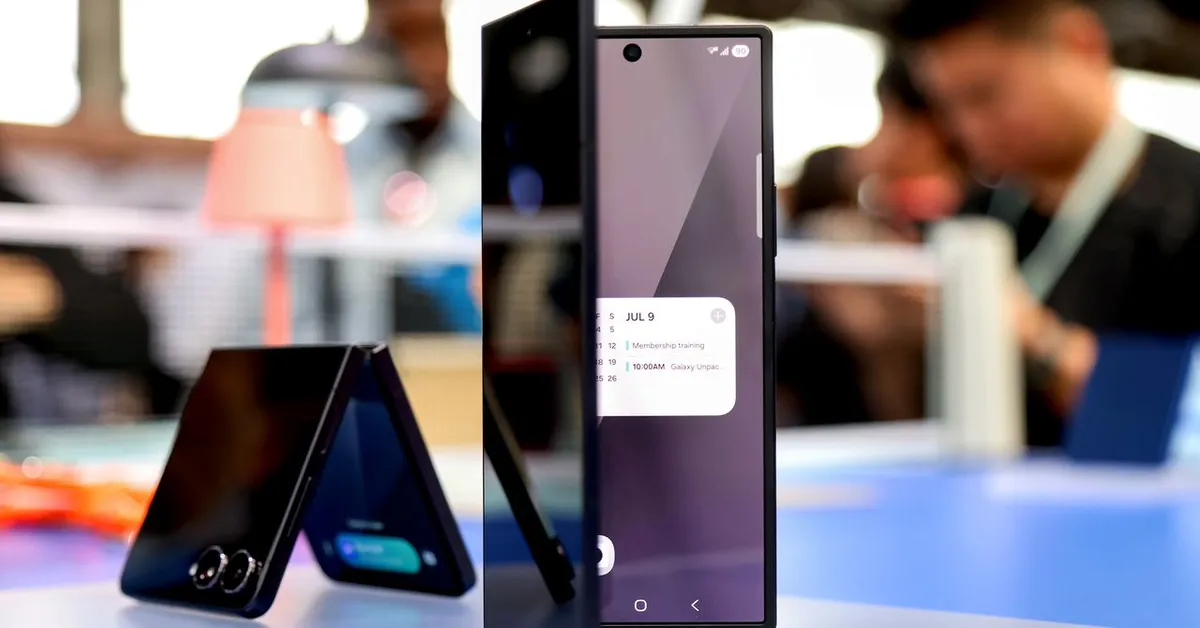
Earlier this week, at the highly anticipated Summer Galaxy Unpacked event, Samsung introduced the latest generation of its premium foldable phones: the Galaxy Z Fold7 and the Galaxy Z Flip7. These new devices promise to be lighter, thinner, and less prone to creasing than their predecessors. However, they also come with a higher price tag, leading some industry commentators to label them the “foldables to beat.” This messaging from Samsung echoes sentiments from previous years, raising questions about their innovation amidst fierce competition.
While the Galaxy Z Fold7 and Galaxy Z Flip7 are certainly not bad devices—many users appreciated their predecessors—there’s a growing perception that these latest models lack the excitement seen from their Chinese competitors. This sense of déjà vu feels particularly pronounced in the rapidly evolving landscape of consumer technology. The sentiment of boredom surrounding Samsung’s latest offerings mirrors the “Old Man Yells at Cloud” meme from The Simpsons, highlighting a deeper concern: China’s rising dominance in the consumer tech sector.
The shift in innovation dynamics is becoming increasingly evident in various sectors, including electric vehicles (EVs). At this year's Shanghai Auto Show, WIRED writer Alistair Charlton described the event as a “warning to the West,” as Chinese manufacturers showcased innovations and scalability that Western brands have struggled to match. Chinese carmakers are aggressively pushing the envelope on features, design, and charging speeds, positioning themselves for expansion beyond their already substantial domestic market.
For instance, BYD, China’s largest EV-maker, has already launched its vehicles in the UK and Europe. The same could be anticipated for the US market, were it not for tariffs and the scrutiny that would accompany such a move. The outdated notion that Chinese technology equates to inferior quality is rapidly becoming obsolete. China’s significant investments in EV technology are merely the tip of the iceberg in terms of its innovation capabilities.
Returning to the foldable phone landscape, it’s important to note that Samsung was outpaced in the sub-9 mm foldable race by the Chinese brand Honor, which unveiled its Magic V5 just a week before Samsung’s launch. This timing underscores the competitive nature of the market, particularly given that the Honor device is only 0.1 mm thinner than the Galaxy Z Fold7. Chinese brands have developed a knack for these headline-grabbing “firsts,” as evidenced by the rushed launch of Royole’s Flexpai in 2018, which was often criticized for its lack of quality.
However, the narrative has shifted. It’s no longer just about being the first to launch; instead, Chinese manufacturers are focusing on genuine advancements. For instance, the Oppo Find N5, announced in early 2025, matches the thickness of the Galaxy Z Fold7 while introducing meaningful enhancements, such as stylus support on both inner and outer displays—a feature Samsung has omitted in its latest model.
Moreover, the Oppo Find N5 boasts a silicon-carbon battery that offers a remarkable 5600 mAh capacity, significantly outpacing the Galaxy Z Fold7’s 4400 mAh. With 80-watt fast charging compared to Samsung’s 25 watts, the Oppo device demonstrates how older models are quickly falling behind new releases.
In September 2024, Huawei introduced the Mate XT, a trifold design that expands from a 6.4-inch screen to a tablet-like 10.2-inch display. Despite its complexity, the Mate XT remains only slightly thicker than Samsung’s previous Galaxy Z Fold6. Many anticipated that Samsung would reveal a trifold design at this year’s Unpacked event, but instead, the company announced plans to develop one for late 2025.
So why are Chinese manufacturers like Xiaomi and Huawei aggressively launching innovative foldables while Samsung appears hesitant to implement more significant upgrades? One reason could be that Chinese consumers have become more discerning, often seeking unique and advanced devices as they upgrade from older smartphones. According to Neil Shah, Vice President of Counterpoint Research, China is the largest market for foldable phones, with two out of every three foldables sold globally originating from the region.
In contrast, markets like the USA and Western Europe still lag behind, with foldable phones comprising only around 1% of total smartphone sales. Despite the buzz, consumers in these regions are hesitant to invest in foldables, contributing to a stagnation of innovation among brands focused on Western sales.
The success of Chinese brands can also be attributed to significant government support and the push for technological supremacy. For instance, BYD has reportedly received around $3.7 billion in subsidies, while Huawei benefitted from $75 billion in state support prior to its US sanctions. This backing has enabled Huawei to thrive as a “local” hero, even in the face of international challenges.
The landscape of consumer tech is poised for a dramatic shift as China continues to invest heavily in advanced technologies, from semiconductors to AI. According to economist David Autor, we may be entering a “China Shock 2.0,” where China not only dominates low-cost manufacturing but also leads in advanced technology production.
China’s burgeoning capabilities in technology manufacturing, particularly in displays and components, are contributing to the rapid advancement of its foldable phones. As brands like Huawei and Honor continue to innovate, they will be well-positioned to challenge established players like Samsung and potentially reshape the smartphone landscape.
As consumers await the long-anticipated launch of an Apple foldable smartphone, Chinese brands will be ready and waiting, having established a clear lead in this competitive market. The unfolding narrative indicates that while Samsung remains a key player, the future of foldable technology may be dictated by the innovations emerging from China.